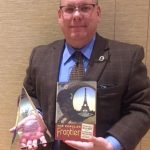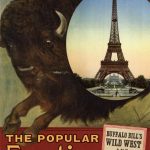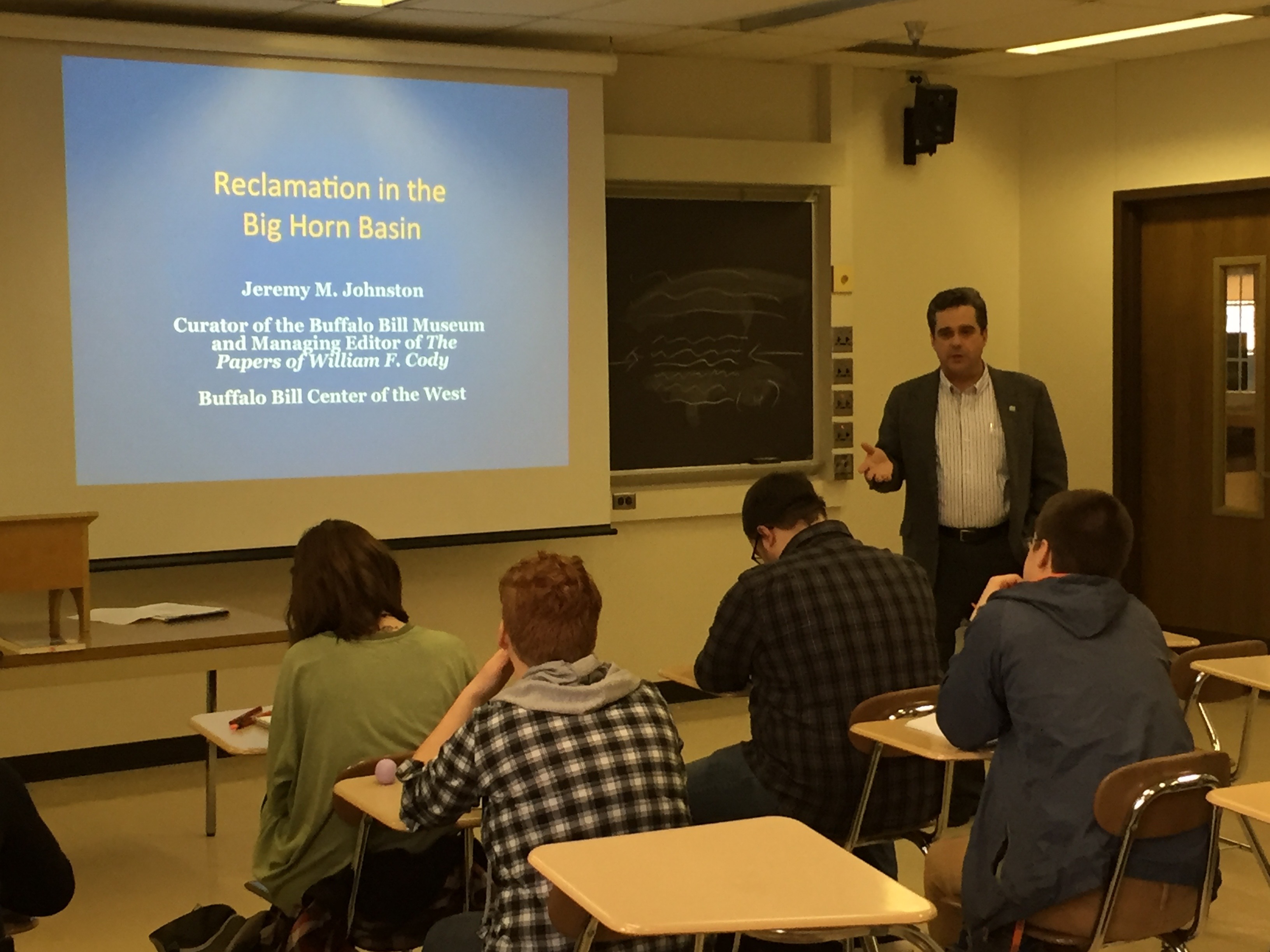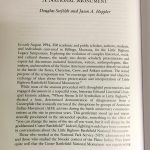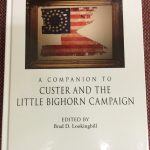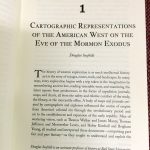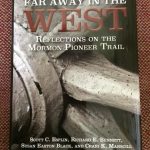Lakota Performers in Europe: Their Culture and the Artifacts They Left Behind, the third book in our series, The William F. Cody Series on the History and Culture of the American West, published by the University of Oklahoma Press, is the winner of the 2018 Best Nonfiction Book award by the National Cowboy & Western Heritage Museum in Oklahoma City, OK! The book is written by by Steve Friesen with Francois Chladiukand and features a Foreword by Walter Littlemoon.
Tag Archives: American West
Cody Series Book Wins PCA Prize!
The Popular Frontier: Buffalo Bill’s Wild West and Transnational Mass Culture, the fourth book in our series, The William F. Cody Series on the History and Culture of the American West, published by the University of Oklahoma Press, recently won the Ray & Pat Browne Award for Best Edited Collection in Popular Culture and American Culture from the Popular Culture Association. The award was formally presented at the PCA annual conference in Indianapolis, IN on March 29, 2018 to Frank Christianson, the Senior Editor of The Papers of William F. Cody and the editor of this collection of essays. Co-Series Editor Douglas Seefeldt was on hand to accept the award on Frank’s behalf. Congratulations Frank!
New Book Explores Buffalo Bill’s Wild West Exhibition Impact On Europe
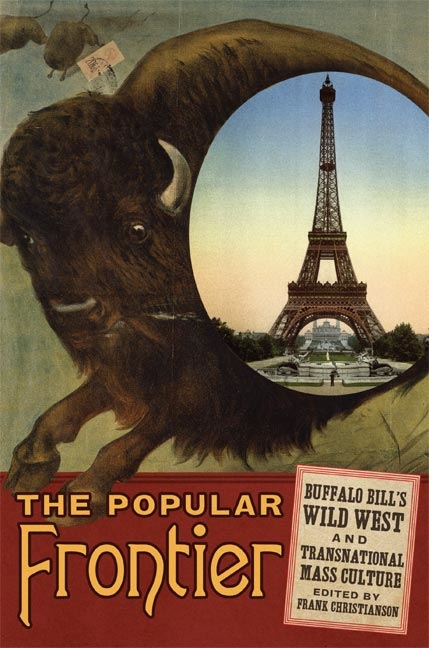
I am pleased to announce the newest book in our series, The William F. Cody Series on the History and Culture of the American West, published by the University of Oklahoma Press! The following link takes you to a nice interview with Frank Christianson, the Senior Editor of The Papers of William F. Cody and the editor of this collection of essays: The Popular Frontier: Buffalo Bill’s Wild West and Transnational Mass Culture
Historian Jeremy Johnston visits Ball State U. Class
Last April, western historian Jeremy Johnston joined my HIST 318/518: History of the American West class on Friday, April 1, 2016 to discuss William F. “Buffalo Bill” Cody’s role in reclamation in the American West.
Jeremy M. Johnston is the Hal and Naoma Tate Endowed Chair and Curator of Western History, the Ernest J. Goppert Curator of the Buffalo Bill Museum, and, the Managing Editor of the Papers of William F. Cody at the Buffalo Bill Center of the West. He was born and raised in Powell, Wyoming, a reclamation town named for John Wesley Powell. Johnston attended the University of Wyoming, from which he received his bachelor of arts his master of arts. He taught history at Northwest College in Powell for more than fifteen years. He is a past president of the Wyoming State Historical Society, and has appeared on various Wyoming PBS documentaries.
Johnston’s scholarship has appeared in the journals Annals of Wyoming, Colorado Heritage, the Center of the West’s own magazine Points West, Readings of Wyoming History, the George Wright Forum, and Yellowstone Science. He released his first book, a photo history of Powell, Wyoming, in 2009, followed by a “then and now” photo history in 2012. Johnston is the recipient of the 2006 Coke Wood Award, sponsored by Westerners International, for his article “Progressivism Comes to Yellowstone: Theodore Roosevelt and Professional Land Management Agencies in the Yellowstone Ecosystem.” A PhD candidate at the University of Strathclyde in Glasgow, Scotland, Johnston is finishing his doctoral dissertation examining the connections between Theodore Roosevelt and William F. “Buffalo Bill” Cody. Collaborating with Dr. Charles Preston of the Center’s Draper Natural History Museum, he published an annotated version of Ernest Thompson-Seton’s Wahb: The Biography of a Grizzly, recently published by University of Oklahoma Press. Johnston is working on an edited edition of George W. T. Beck’s unpublished memoirs that detail Beck’s ranching ventures in Wyoming and his efforts to establish a reclamation project with Buffalo Bill that resulted in the founding of the town of Cody, Wyoming.
Ernie LaPointe, Great-grandson of Sitting Bull, visits Ball State U. class
On Monday, September 19 and Tuesday, September 20, 2016, Ernie LaPointe, a Great-grandson to Hunkpapa Lakota chief Sitting Bull, visited Ball State University to give a public talk and to speak with students. On Tuesday afternoon he visited my HIST/NREM 204: U.S. Environmental History course where he spoke on the topic, “Live in Tune with Mother Earth.”
Mr. LaPointe, author of the book, Sitting Bull: His Life and Legacy (2009) and the producer of the documentary film, Sitting Bull’s Voice (2013), shared his Lakota cultural perspective on both the history of human relationships with the natural world and the precarious future facing the human race if it does not heed the wisdom of the ancient knowledge carefully curated by the First Nation peoples and make changes in order to “live in tune with Mother Earth.”
LaPointe is the president and founder of the Sitting Bull Family Foundation, and he and his wife Sonja travel across the U.S. and abroad sharing the history of Sitting Bull and the cultural heritage of the Lakota people.
Historian Elizabeth Tandy Shermer visits Ball State U. history class
On May 2, 2016, historian Elizabeth Tandy Shermer made a “Virtual Visit” to my HIST 318/518: History of the American West course to discuss her book that I had assigned that semester, Sunbelt Capitalism: Phoenix and the Transformation of American Politics (2013). The students certainly found the political development that Shermer describes in her book to be particularly relevant to their understanding of the more recent history of the American West, but also to their understanding of national current events that are front and center during this presidential election year.
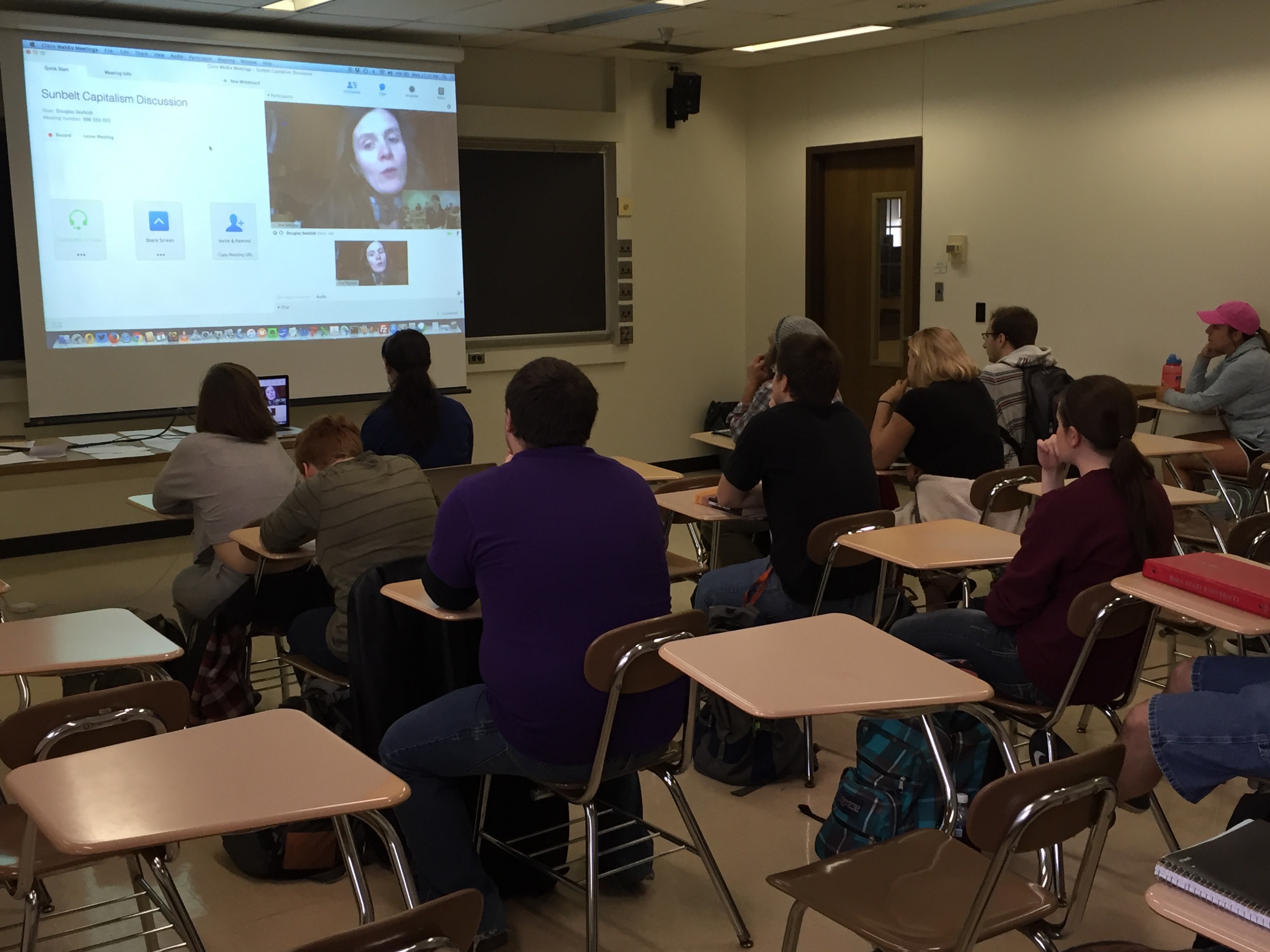
Some students asked professor Shermer questions about why she chose to focus on Phoenix, Arizona and how long it took her to conduct the research and then write the book. Other students asked her if she believed that the rise of Western conservatism halted the progress of the civil rights movement, and to share her thoughts as to whether the rapid growth of Phoenix and other sunbelt cities will be sustainable. This was an exciting opportunity for these Indiana students-most of whom have never been to the west-to meet the author and to discuss her book.
Fun fact: Ellie was my first-ever research assistant when I was a post-doc at the University of Virginia and now she’s an award-winning professor at Loyola University in Chicago! They grow up so fast… 😉
But Wait…There’s More!
- An essay that I co-authored with Jason Heppler
- A collection of original essays that contains a piece I co-authored.
Arriving in my mailbox on the same day as the other volume, A Companion to Custer and the Little Bighorn Campaign contains a long essay, “A National Monument,” that I researched and wrote in collaboration with a former UNL graduate advisee Jason Heppler. This is another examination of history and memory in an important landscape in the American West similar to my earlier journal articles on sites in New Mexico and Arizona. In addition to using traditional research methods, Jason and I also employed Digital Humanities text analysis tools to investigate the topics and rhetoric contained in two of the three editions of the official interpretive handbook for the Little Bighorn battlefield National Monument site. I hope that students of the history of the United States, the American West, and History & Memory, along with those who are fascinated with the Native American experience and the mythic figure of George Armstrong Custer, will find this piece a welcome contribution to that voluminous historiography.
This Just In…
- Douglas Seefeldt, “Cartographic Representations of the American West on the Eve of the Mormon Exodus”
- My essay, “Cartographic Representations of the American West on the Eve of the Mormon Exodus” appears in this collection.
What began as an invited lecture to speak to the faculty of Brigham Young University’s Religious Studies Center in Omaha, NE along the Mormon Pioneer National Historic Trail in the summer of 2012 has just been published! As the lead essay in this collection of twelve pieces, I trace the cartographic ideas of the Far West around the time of the Mormon exodus from Illinois to Utah in the mid-nineteenth century. The essay examines the significant works of cartography featuring the American West created just after the Lewis and Clark expedition through the constitution of the State of Deseret in 1849. These are the depictions of the region that Church leadership used to establish the stake of Zion, the settlement of the Great Basin, the proposed State of Deseret, the creation of Utah Territory, and eventually the state of Utah. I am pleased to see it in print and hope that it is of use to those who study cartography, Mormon history, the American West, and United States history.

